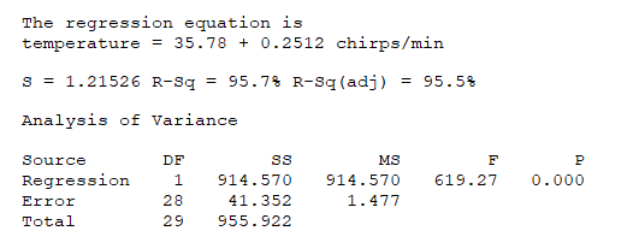Multiple Choice
In the late 1890s, scientists first noted that the frequency of a cricket's chirps is related to air temperature.For each of 30 crickets, the frequency of chirping (in chirps per minute) and the air temperature (in degrees Fahrenheit) were recorded, and a regression analysis was performed. 
Given that Sxx= 14,497.9 and  117.067, what is a 95% confidence interval for the mean air temperature when a cricket is chirping at a frequency of 120 chirps per minute?
117.067, what is a 95% confidence interval for the mean air temperature when a cricket is chirping at a frequency of 120 chirps per minute?
A) (66.539, 67.301)
B) (63.818, 68.022)
C) (65.462, 66.379)
D) (62.389, 67.451)
Correct Answer:

Verified
Correct Answer:
Verified
Q22: Consider these five x, y pairs.
Q23: The multiple linear regression model assumes:<br>A) the
Q24: From a random sample of n =
Q25: The least-squares method for determining the best
Q26: The equation <img src="https://d2lvgg3v3hfg70.cloudfront.net/TB8195/.jpg" alt="The equation
Q28: Which value of the correlation coefficient r
Q29: Consider the following regression summary: <br><img src="https://d2lvgg3v3hfg70.cloudfront.net/TB8195/.jpg"
Q30: Consider the following regression analysis for predicting
Q31: The appropriate pattern for a residual plot
Q32: Medical researchers conducted a study designed to